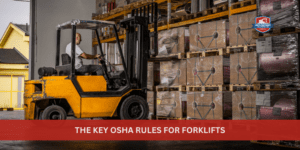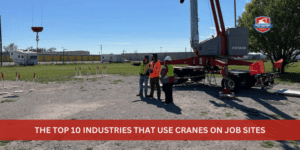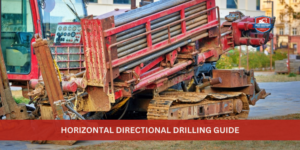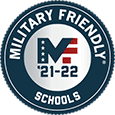One surefire way for construction workers to increase their salaries is to increase their skillsets. Learning how to safely and efficiently operate heavy machinery will expose the workers to more work opportunities and higher pay.
Bulldozers are vehicles designed to either move materials or break materials down. The part of the bulldozer that interacts with the material is called the blade. Bulldozers are used in many types of projects, including construction, snow removal, forestry, and moving cargo. Knowing how to operate a bulldozer well can save the project time and money, as well as preventing on-the-work injuries.
Crawler Bulldozers
Crawler bulldozers have tracks instead of wheels in order to safely traverse softer terrains. Many crawler bulldozers have ripping apparatuses in the rear to break down hard surfaces. Both small and large crawler bulldozers move materials and objects around the construction site.
Wheel Dozers
Wheel dozers travel on wheels instead of tracks. Wheel dozers are also larger and swifter than crawler bulldozers. Bulldozer operators will use wheel dozers for operations that require high power and speed.
Mini Dozers
Mini dozers are small bulldozers that can fit in areas where larger bulldozers could not safely operate. Mini dozers are more maneuverable and versatile than larger bulldozers.
Become a Bulldozer Operator
How to operate a Bulldozer?
This earth-moving machine has front-mounted blades and a rear-mounted ripper to assist in smoothing ground for roads, runways, building sites, and golf courses. Once you learn how to operate a bulldozer, it isn’t that difficult.
Want to Know How??Shiphold Dozers
Shiphold dozers are a specially-designed type of bulldozer. They specialize in moving cargo in and out of ships docked at a port.
Mulcher Dozer
Mulcher dozers are equipped with large mulchers in the front. Mulcher dozers are used for forestry and roadwork tasks.
Straight Blade (S-Blade)
An S-blade attaches to the rear of a bulldozer by the lower corners of the arms. The S-blade is often used for stripping and ditching operations, especially when the materials are fine-grained and range from medium to hard in density. However, its straight-edged shape makes it a poor blade for lifting and carrying.
Universal Blade (U-Blade)
The U-blade is the largest blade type. The side wings and curves of a U-blade make it an ideal blade for moving materials across long distances. The U-blade is often used to move soft or medium soil. The U-blade is used for ditching and hauling operations.
Semi-U Blade (S-U Blade)
The S-U-blade combines aspects of both the S-blade and the U-blade. The S-U blade has small side wings, and the blade is both relatively narrow and less curved. The S-U blade is often used on soft to medium soil for moving heavy materials and for crowning.
Angle Blade
The angle blade attaches to the center of the bulldozer’s panel so it can more easily remove obstacles and debris in front of the bulldozer. Since the blade is angled, debris is moved to the left or to the right of the bulldozer. In addition to operating on soft to medium-hard soil, the angle blade also works on snow and gravel. The angle blade is used in operations such as shaping and stumping.
Power-Angle-Tilt Blade (PAT blade)
The PAT blade can be angled, tilted, and lifted in many directions, making it a versatile blade for bulldozers. The PAT blade is best used on medium to hard materials for operations such as leveling and scraping.
Read our other Interesting Articles Here!!

The Key OSHA Rules for Forklifts
Forklifts make jobs involving heavy lifting easier than ever. They can carry objects that are either extremely difficult or impossible to transport manually, which protects

The Top 10 Industries That Use Cranes on Job Sites
From hoisting heavy cargo to installing power lines, cranes help workers across industries complete essential tasks. Given the weight of cranes and the intricacies involved

The Complete Industrial Guide to Horizontal Directional Drilling
When installing underground pipelines near unique land areas, horizontal directional drilling is a surefire way to minimize the negative environmental impact. Let’s take a closer
Who Invented the Bulldozer?
The first part of the bulldozer to be invented was the blade. Prior to steam locomotion, people used mules to push the blade and perform the moving operations.
The modern bulldozers had two known precursors. The first device was a steam traction engine with an endless chain tread, and its inventor was Benjamin Holt. The second vehicle was a device created by the Hornsby company of England in roughly 1904. The company repurposed one of their wheeled steam traction engines into a tracklayer or “crawler.” The Hornsby company sold the patent to their machine to Benjamin Holt around 1914.
Benjamin Holt founded the Caterpillar company. He coined the name for his company from a photographer who remarked that, when looked at upside-down, the top of the tracks to Holt’s tracklayers looked similar to caterpillars. Benjamin Holt formed the Caterpillar company in 1925 after merging with the C.L. Best Gas Tractor Company.
How to Become a Bulldozer Operator
The minimum education to become a bulldozer operator is a high school diploma or a GED. However, many employers will seek additional education, including but not limited to auto mechanics and mathematics. Taking courses in heavy machinery at a vocational school is highly recommended.
After landing a bulldozer operator job, new employees often start an apprenticeship which can last up to four years. During this time, the apprentice learns how to operate, maintain, and repair bulldozers from their mentors. And some states will require that the apprentice get a commercial license or a heavy machinery license to operate the bulldozer.
Workers who are interested in getting both classroom and hands-on experiences with heavy machinery are urged to seek a mechanical college. Heavy Equipment Colleges of America offers certifications in heavy machinery that can give its students the skills they need to safely and efficiently operate multiple types of heavy machinery.




